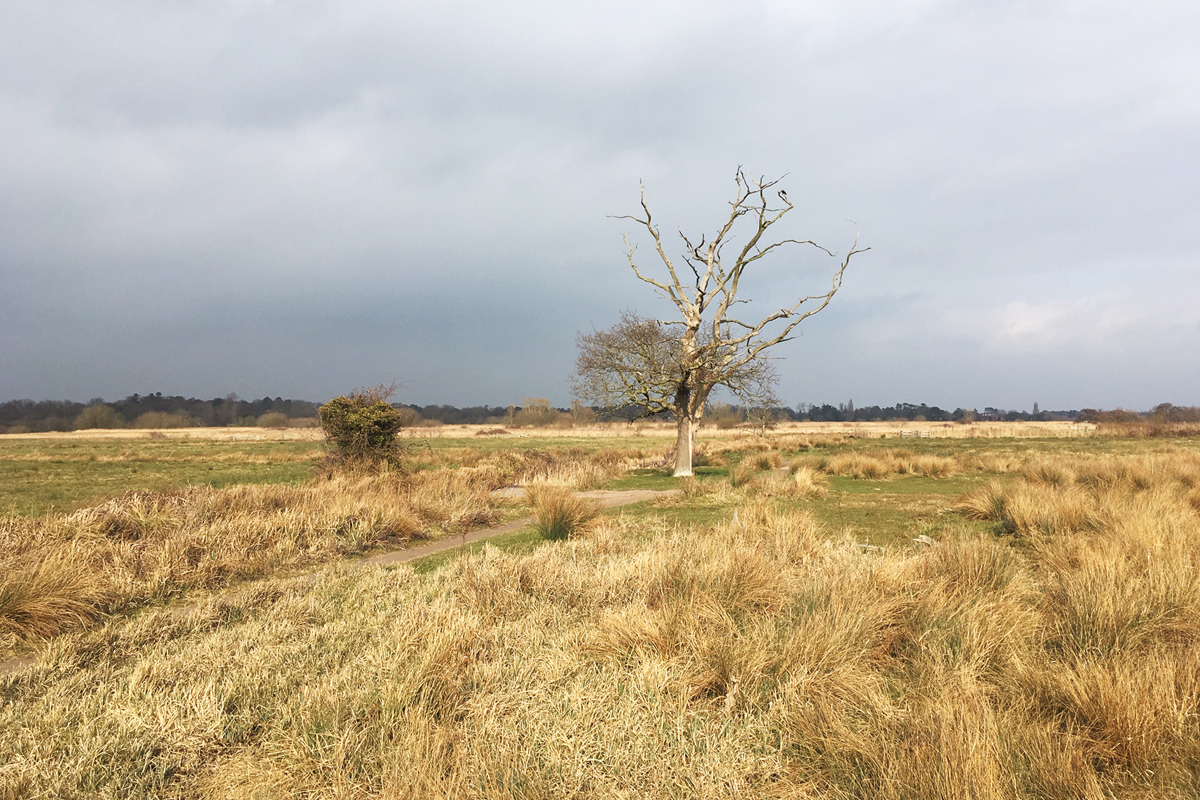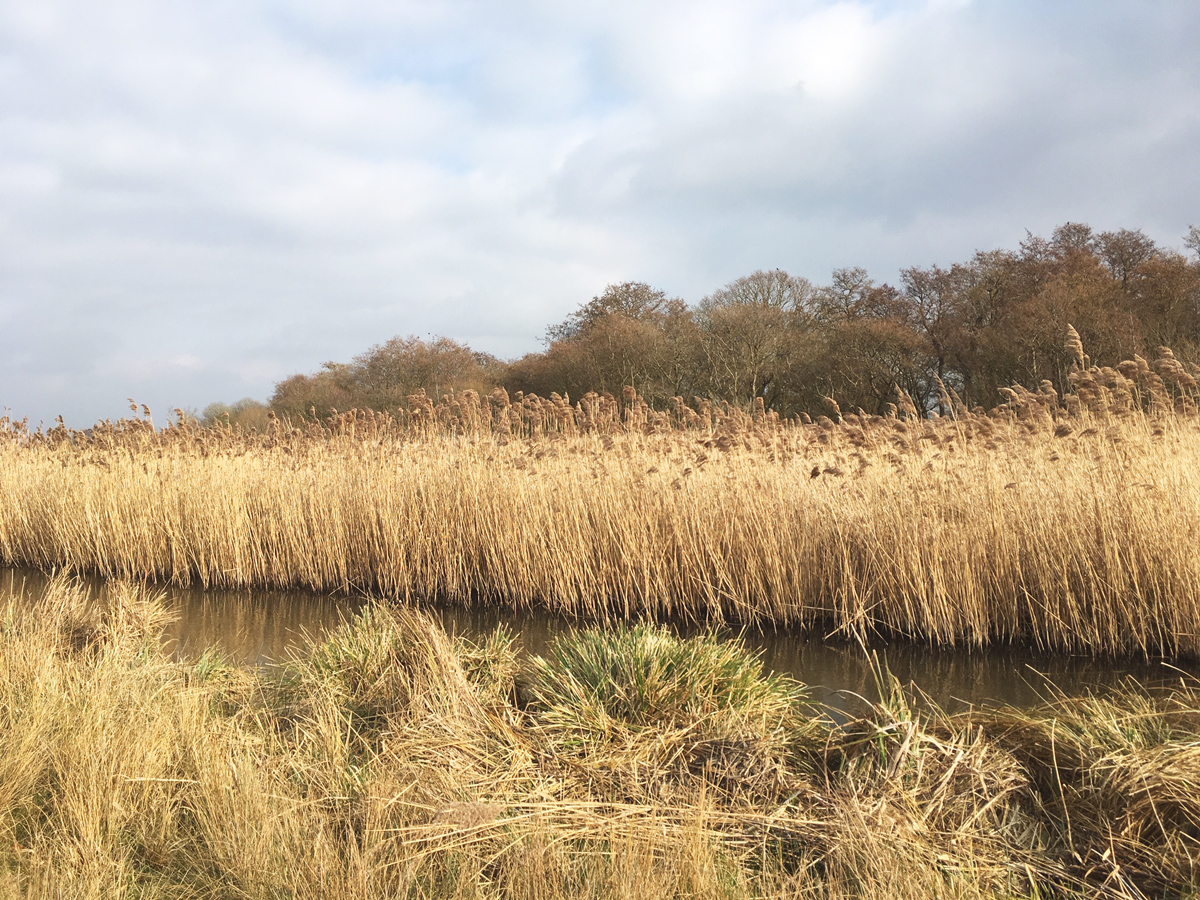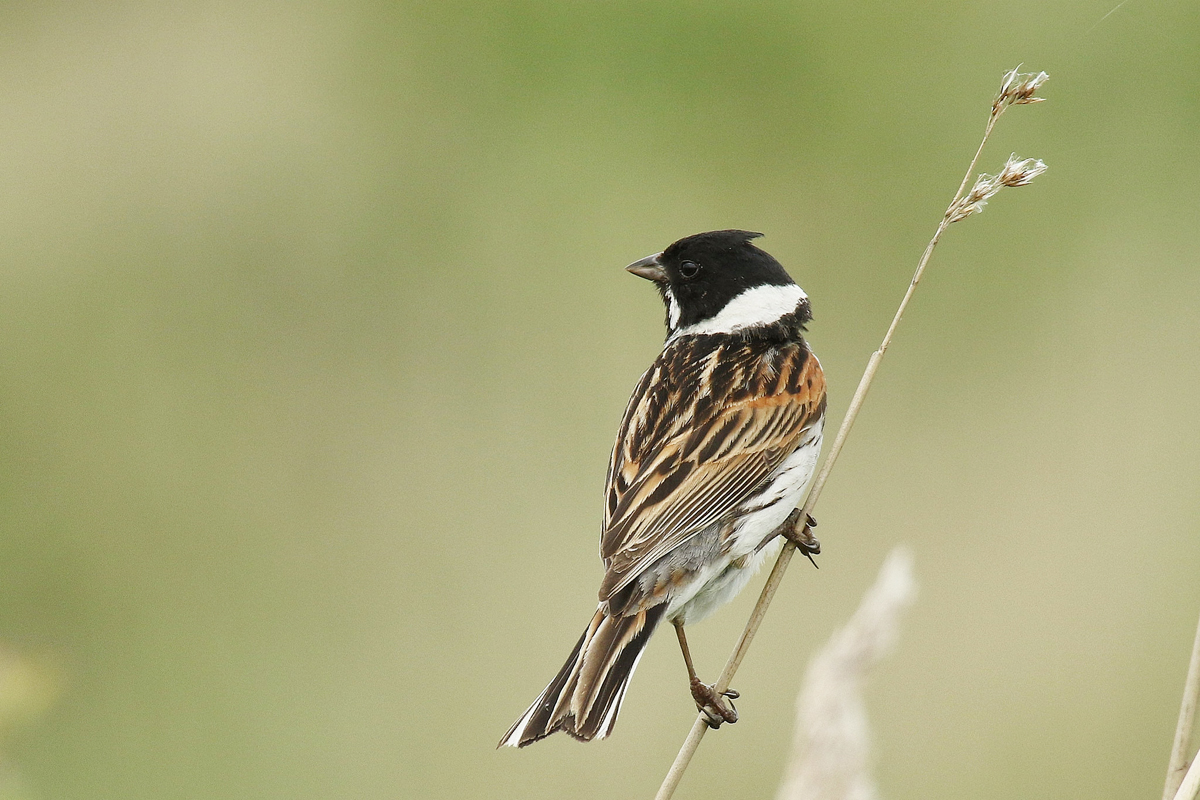

Every month we’re visiting a different Broads nature reserve to give you the low down on what makes them unique and what to expect when you get there, welcome to the first in the series in which we visit the Suffolk Wildlife Trust’s Carlton Marshes in March…

It’s the first of March and Carlton Marshes is as tranquil as it is wild. The only sound is the wind in the reeds and the call of the rooks upon a solitary oak tree. The sky is the colour of a bruise and every so often a ray of sunlight breaks through it and ignites the rivers into ribbons of gold. The wide open planes are broken only by the height of the occasional tree or line of reeds, meaning that the vista of Carlton Marshes stretches as far as the eye can see. Today, in the wilds of March, the long grasses move like waves, rippling and braking in time with the sway of the trees.
This is the Broads at its most dramatic, a time when fewer visitors arrive in the area, though there are a loyal few who swear it to be the best time of the year, and you can see why. This is not the Broads we remember from colourful vintage railway posters, this is something darker, and colder and arguably more rewarding. There is a bleak-beauty to the Broads in winter which is akin to the thrill of the Bronte’s moors. As the landscape becomes almost unpopulated by people, there is no better time to lose yourself in nature, and Carlton Marshes makes for the perfect location.

There are signs of life everywhere, from the buds appearing on the pussy willow to the wooden water vole platforms quivering upon the water. Coots and mallards run for cover between the rushes and the dainty footprints of deer decorate the footpaths. This is not the best day to see the outstanding wildlife which thrives here, but had the winds been less bellowing and the waters less rippling then the panoramic views across Carlton Marshes would have told a very different tale.
The reserve has been nicknamed ‘the Broads in miniature’ as almost every aspect of what makes the Broads National Park unique can be found right here. From the tusked-Chinese water deer to the Fen raft spider (Europe’s largest and rarest arachnid) there are sights here which you won’t find anywhere else in the world.
When it comes to what you might spot, direction is key. Up high there are the mighty marsh harriers, and the wheeling hobbies. At eye level there are the reed buntings and the warblers of every type darting between the reeds. At your feet are the water voles, the aquatic plants and the pike lurking in the depths. At every level, there is something to see and whether it’s migratory wild foul on a crisp winter’s day or a haze of mirror-winged dragonflies in the height of summer, you will find that the heartbeat of this rare reserve is its pattern of seasons and with it the annual rotation of flora and fauna which make every visit an entirely new experience.
Just as the seasons and species evolve so too is the landscape of Carlton Marshes evolving. Following a £4 million grant from the Heritage Lottery Fund and a further £1 million in donations, the reserve has been able to purchase a whopping 384 further acres of land. The campaign was backed by Sir David Attenborough, who described the reserve as a “precious corner of East Anglia” with “wildlife in all its splendour”.

Today is too blustery to spot much more than a marsh harrier sheltering upon a tree but since the reserve is open 360 days a year, there is always tomorrow. With well-behaved dogs allowed on a lead and endless footpaths to choose from there is every reason to put this atmospheric reserve at the top of your list for places to visit in the Broads. Even on a day like today, there is nothing more rewarding than striding out over the marshes to take in a lesser-seen view: The Broads deserted and wild.
Where: Carlton Marshes, Burnt Hill Lane, Carlton Colville, Lowestoft, Suffolk, NR33 8HU
Facilities: Toilets and picnic area
Opening Times: All year long, dawn until dusk
Accessibility: Wheelchairs and pushchairs can use a firm path around part of the marsh including easy access gates. Parts of this reserve are accessible by mobility scooter.
Public Transport: Carlton Marshes has good public transport links with buses stopping near the end of Burnt Hill Lane on the A146 and Oulton Broad South and North stations being a 20 or 30 minute walk respectively.
Dogs: Dogs are welcome on a lead.
Places to sleep and eat: Ivy House Country Hotel and The Waveney River Centre
Contact number: 01473 890089
Contact email: info@suffolkwildlifetrust.org